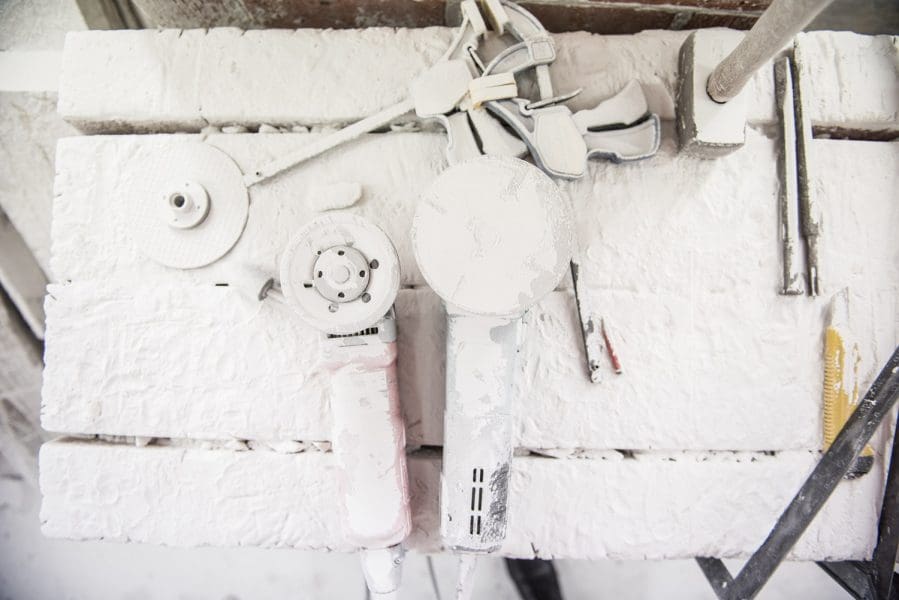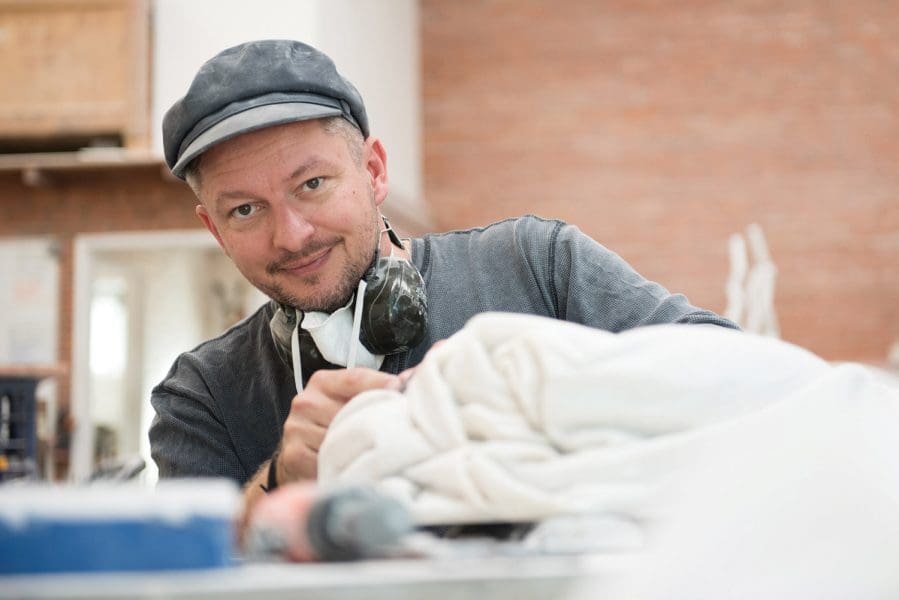
Piercing the veil
A new exhibition at Buxton Contemporary finds a rich complexity in the shadowy terrain between life and death.
Alex Seton: We are coming up to our 10-year anniversary of being in this studio. And that is leasing, which in Sydney is amazing. I remember the first time I ever saw it: I walked in and there was a massive Tyrannosaurus Rex hanging from the middle of the ceiling. And I went, ‘What is this space? It’s incredible!’
I was so excited that I rang the real estate agent, even though it wasn’t vacant, and put myself on a list because it was perfect. And many, many years later, I had nowhere to go because the studio I’d been in for a year had finished up, and out of the blue, that same week, I got a call from the real estate agent about this place. Nobody ever gets that lucky! I immediately took it. And I’ve been very happy here. It has been the best studio I’ve ever had.

Any quiet painting, drawing or computer work is done in a different space in my house nearby. This space is 100 per cent dedicated to marble carving, which I do with my assistant Mitchel Ferrie, an artist in his own right.
We have set the studio up for modern techniques. So there is a lot of grinding, a lot of power tools. There is lots of dust. Noise protection and masks are an absolute must. We have an air compressor with hospital grade filters on it to bring fresh air directly to our mouths with positive pressure. So we are like deep sea divers! We also get regular scans to check our lungs. And I’m happy to say that we both got the all-clear recently. You have to be diligent, I’m not interested in dying for this. I love doing it.

Process: I do have a set routine. I am here from nine in the morning to 11 o’clock most nights. I am a real night owl! In the morning Mitch and I chat about what he’s working on. Often he’s the muscle. He will rough out a large block to my specifications, to take some of the labour out of it. And then I can get down to the creation of the actual work far more quickly.
There are so many small physical tasks that have to happen in the creation of one sculpture. And obviously my chosen medium, marble carving, is labour-intensive. How long you can work on something is like ‘How long is a piece of string?’ Because there is always some extra task. Always. But I set strict time limits in which to be satisfied, to execute the object I’m imagining. And I try to keep myself fairly disciplined in that way.
As the artist, I am not only executing the work, I am also its primary viewer; I am learning about myself from this material. And that can be interesting.
After hours and hours of labour there is always a stage in an individual sculpture when suddenly I’m really delighted because it is all coming together. And then it becomes something else. And then I start seeing it. And sometimes the rush from that feeling translates into, ‘Oh what if I take that idea…’ and that’s when inspiration hits, after all the labour. And then I go home and draw it, or draw it on the studio whiteboard, very quickly before I forget it.
I think now, after 18 or 19 years of commercial shows, I have more work that I want to make in this lifetime than I can actually make. So now I stall as long as I can before an exhibition because I want to make the thing that I find most interesting; the thing I am compelled to make. I work three or four shows in advance. As in I always have three or four shows in my head, besides the ones I’m working on now.

Projects: My first show in 2020 will be The Great Escape at Goulburn Regional Art Gallery. I grew up around Wombeyan Caves, which is part of that district, so it’s partly about identity and wanting to escape where you are from. But another leaping-off point is a 2017 work, which the gallery acquired, called Left Turn Albuquerque. For this video, I created a stone wall and dug my way through it from left of frame to right of frame, Bugs Bunny style. So it has me tunnelling away, tunnelling away, tunnelling away in stop motion and out the other side. It’s humorous, but it was really exhausting to make and it addresses the ongoing question of who we choose to keep on the outside, and why.
Obviously I’ve made a lot of work about asylum seekers and refugee policy in the last few years, but there are two strands to my practice. I have had shows that are essentially about art. This is a source of fascination for me; human creativity and why we do it all. And I love the lineage of ideas that runs through my chosen medium of marble. Also conceptually, we think of stone as permanent but it is no longer the most permanent thing in the world. There are more permanent things in your iPhone. This is what I’ll be doing in Rome after the Goulburn show. I’ll be working with the American Academy academics and researchers in their conservation department looking at environmental impacts on stone.

Then there is the work I am probably more well known for, the front facing, plain spoken, socially engaged work. In these works I try to look for a creative point of empathy. The great thing about marble sculpture is that people recognise labour when they see it, and I can use that to my advantage. I used to run away from it, because it feels like trickery – using skill –but you suddenly run towards the sincerity in that. A marble sculpture is very difficult to dismiss.
This article was originally published in the January/February 2020 print edition of Art Guide Australia.
Meet Me Under the Dome
Alex Seton
Sullivan+Strumpf
26 November – 23 December 2020